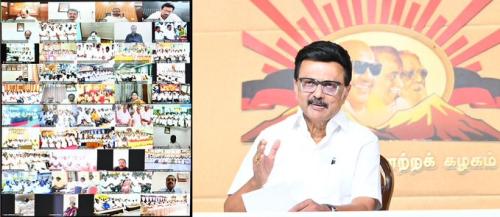Dhasai, Maharashtra: The point-of-service machine at Chetan Jewellers, a store in Dhasai that is considered the country’s first cashless village, has not been charged for four days now. The swipe machine has been gathering dust as Ashok Mali, the owner of the shop, hasn’t had a chance to use it for a week now. “Hardly anybody uses an ATM card to pay. Often, the machine fails to connect to the server so it’s a hassle,” said Mali. Across the street, Gulab Sheikh, a housewife who had come to Dhasai to buy a saree paid in cash. “I don’t know what cashless means. I have never used an ATM card,” she said, with a puzzled look on her face. Dhasai, a quaint village in Murbad taluka located about 100 km to the northeast of Mumbai, embraced a cashless economy on December 1 last year, roughly a month after demonetization. Spread over an area of around 2,700 acres, the village is home to a population of around 5,000 – a mix of traders and farmers. It serves as the central market, healthcare center and banking hub for at least 27 villages nearby. At a time when people across the country were still queuing up outside banks, villagers in Dhasai swiped freshly acquired ATM cards at shops, most of which had installed swipe machines. Those with smartphones had switched to mobile banking and the BHIM app launched by Prime Minister Narendra Modi. Queues outside ATMs had disappeared overnight and even vada pavs could be bought by paying through BHIM. However, presently, only 15-20 per cent of daily transactions have remained cashless, according to Swapnil Patkar, president of the traders’ association of Dhasai. “When a third of the population does not own ATM cards, despite having bank accounts, how can we go completely cashless?” said Patkar. There are two banks in Dhasai. The Thane District Cooperative Bank (TDCB) has close to 27,000 account holders. Of these, only 4,000 have been issued ATM cards. “New account holders get ATM cards immediately and we issue cards to those who apply for one. It takes about 15 days to process the request,” said branch manager, Ashok Warghade. There are around 10,000 account holders in Vijaya Bank, including 5,000 Jan Dhan accounts. All of them have been issued ATM cards, said a bank official. Bank of Baroda, too, has set up an e-lobby in Dhasai and issued PoS machines free of cost to traders but the exact number of account holders is not clear. “This gap in the number of accounts and cards has been a disadvantage. While there is a willingness among villagers, they don’t have the means to carry out cashless transactions. Initially, during the days of demonetization, the response had been very good but eventually when cash started flowing into the ATMs, people returned to cash,” said Ranjit Savarkar, chairperson of Swatantryaveer Savarkar Rashtriya Smarak, which had brought the cashless project to the village by tying up with Bank of Baroda. Despite Savarkar’s claims of willingness among villagers, misconceptions about cards have fuelled the comeback of cash transactions. “There are many misconceptions among the villagers about using ATM cards such as excess tax deduction or security lapse. People reserve their card transactions for certain purchases where the amount is higher,” said Patkar. Often, a family has one ATM card. “The elders or breadwinners in the family usually keep the cards and give out cash to members to make purchases,” said Savarkar, adding that women who often purchase household goods don’t get to use ATM cards. “There is no incentive for using cards. People find paying by cash more convenient,” said Kailash Bhoir, the owner of Dhanashree Agro Centre. For those who have a card, there is a bigger issue – how to use it. Of the total number of account holders, around 30 per cent are illiterate and can’t use cards, according to bank officials. “I have a Jan Dhan account but I don’t know how to use an ATM card, let alone do mobile banking. My children and grandchildren use it sometimes,” said Gajanan Ghulap, a septuagenarian farmer. Not all traders have been issued swipe machines either. Of the over 80 traders, vendors and shopkeepers in Dhasai, 65 have swipe machines, said Patkar. Smaller vendors – fruit and vegetable sellers – who do not have bank accounts can neither keep swipe machines nor use netbanking. “Applications for swipe machines have been pending with banks for over six months,” he said. Sporadic connectivity for PoS machines has, however, left shopkeepers disenchanted with the idea of a digital economy but they still swear by cashless transactions. “All payments from our end to suppliers and contractors are made through cheques, netbanking or from BHIM app,” said Gajanan Sande, who runs a medical shop. Commonly used e-wallets such as Paytm and Freecharge have, however, not found favour among villagers. “The offers and cash backs in these e-wallets are specifically designed for urban population. Most services are not even available to a rural customer,” said Savarkar. Local authorities, however, seem determined to restore the cashless village reputation to Dhasai. As the project nears its first anniversary, several reforms are on the anvil starting with mass card distribution camps. “Over the month of November, we will host three camps where Vijaya Bank, Bank of Baroda and TDCB will issue instant cards to anybody interested in applying,” said tehsildar Sachin Choudhar. According to Choudhar, awareness programs on the various modes of transactions will be held as part of the camps. To solve the connectivity problem, the collector is in talks with service providers to set up wifi spots in local markets. “The banks will have to initiate the process for Aadhaar-based transactions for those who are not literate. That could be one way of enabling farmers and senior citizens to make cashless transactions,” said Choudhar.
One year after demonetization: Country’s first cashless village goes back to cash
- by Rinku
- November 09, 2017 2 minutes

Cashless village










